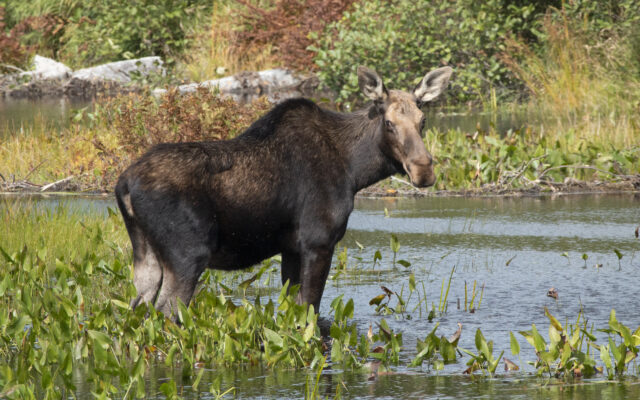
Only 65 percent of hunters have bagged a Maine moose this season
By Pete Warner, Bangor Daily News Staff
Despite a rainy and windy day on Friday, Oct. 14, in which fewer than 100 moose were registered, the latest segment of the 2022 Maine moose hunt brought solid results that boosted hunters’ success rate so far this season.
A total of 1,702 moose have been harvested this season from among approximately 2,630 available permits, according to the Maine Department of Inland Fisheries and Wildlife. That’s a 65 percent success rate so far.
During this year’s first October moose hunting week, 61 percent of hunters (958 of 1,580) were able to fill their tag. That’s a slight increase over the same week in 2021, when warm temperatures were identified as the key factor as 57 percent of hunters were successful.
That single week was instrumental in pushing down the overall success rate for the 2021 hunt to 68 percent, which was the third lowest since its inception in 1980.
Those totals don’t include the special adaptive hunt in WMD 4A.
A year earlier, 76 percent of hunters harvested a moose as part of the statewide hunt, the highest harvest since 2012.
This season’s 65 percent success rate thus far is below the average hunter success of 72.5 percent achieved during the previous 10 years.
There are still 900 hunters gearing up for the remaining month of the statewide hunt. There were 860 cow permits distributed for the week of Oct. 24-29, located across WMDs 1-6 and 8.
There also are 40 any-moose hunters designated for WMDs 14 and 15, with that small segment of the season scheduled for Oct. 29, then Oct. 31-Nov. 26.
The moose shot during the remainder of the 2022 season will be cows and calves. This week marks the beginning of the state’s second adaptive hunt, an effort in part of WMD 4 to reduce the number of cows and calves.
Biologists are studying if the population reduction of cows and calves in a certain region might lessen the effect of winter ticks on moose. The state is trying to establish whether having fewer moose might reduce illness and mortality from the ticks.
Winter ticks have taken a significant toll on moose in key areas such as WMDs 4 and 8. The insects infest moose in huge numbers, up to 90,000 per animal, for five or six months, and feed on them. Moose experience blood loss, hair loss and even behavioral changes.
Young and less hearty animals thus become weakened and many of them die. A DIF&W study of calves captured and collared last winter in parts of Piscataquis and Somerset counties found that a shocking 86 percent — 60 of 70 animals — succumbed to winter ticks by May.
The adaptive hunt will run for three consecutive weeks in the western half of WMD 4. The state has issued 550 permits overall: 200 during the first week, 150 in the second week (Oct. 24-29) and 200 for the final week (Oct. 31-Nov. 5).